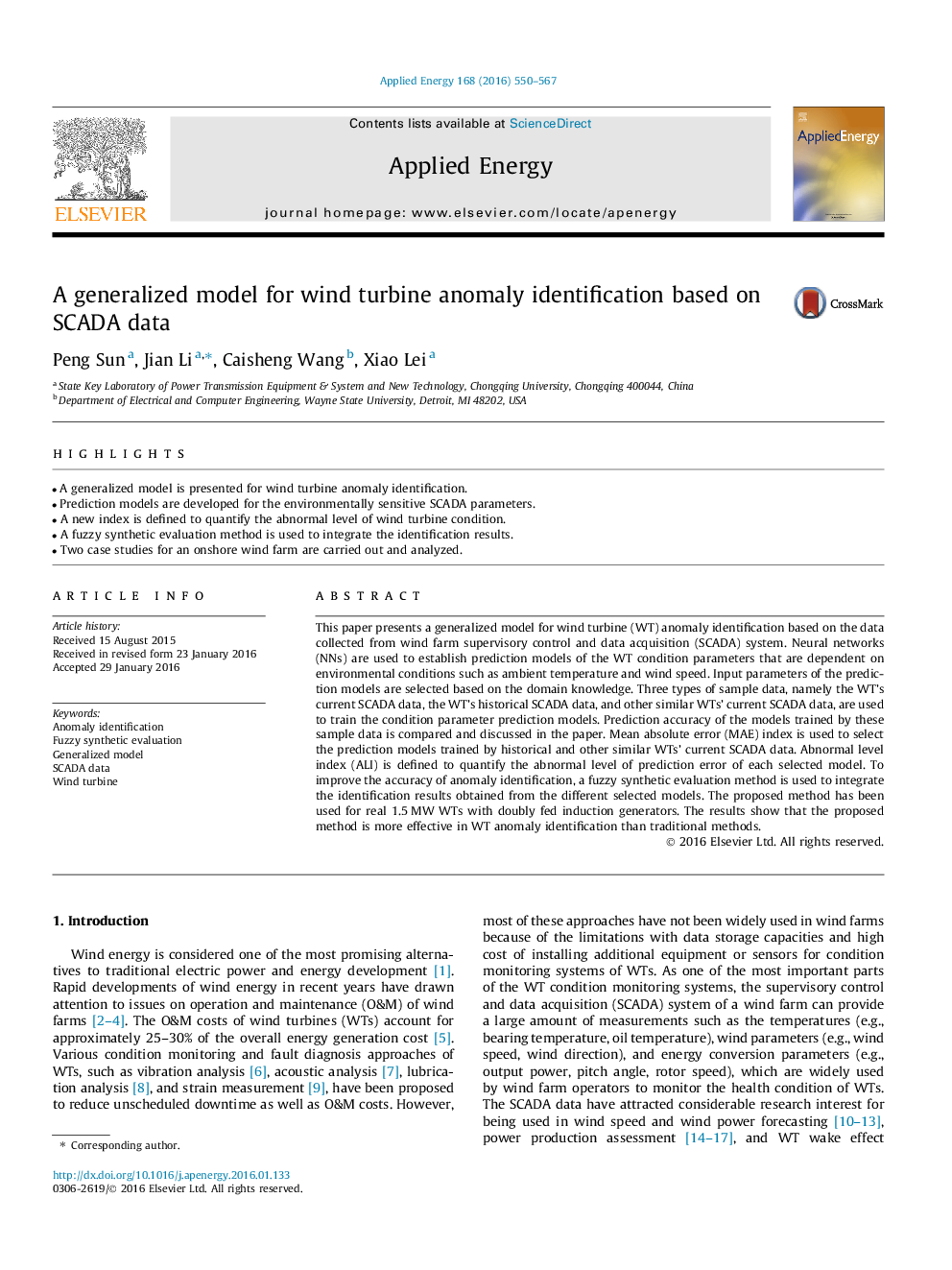| Article ID | Journal | Published Year | Pages | File Type |
|---|---|---|---|---|
| 6683876 | Applied Energy | 2016 | 18 Pages |
Abstract
This paper presents a generalized model for wind turbine (WT) anomaly identification based on the data collected from wind farm supervisory control and data acquisition (SCADA) system. Neural networks (NNs) are used to establish prediction models of the WT condition parameters that are dependent on environmental conditions such as ambient temperature and wind speed. Input parameters of the prediction models are selected based on the domain knowledge. Three types of sample data, namely the WT's current SCADA data, the WT's historical SCADA data, and other similar WTs' current SCADA data, are used to train the condition parameter prediction models. Prediction accuracy of the models trained by these sample data is compared and discussed in the paper. Mean absolute error (MAE) index is used to select the prediction models trained by historical and other similar WTs' current SCADA data. Abnormal level index (ALI) is defined to quantify the abnormal level of prediction error of each selected model. To improve the accuracy of anomaly identification, a fuzzy synthetic evaluation method is used to integrate the identification results obtained from the different selected models. The proposed method has been used for real 1.5Â MW WTs with doubly fed induction generators. The results show that the proposed method is more effective in WT anomaly identification than traditional methods.
Related Topics
Physical Sciences and Engineering
Energy
Energy Engineering and Power Technology
Authors
Peng Sun, Jian Li, Caisheng Wang, Xiao Lei,
